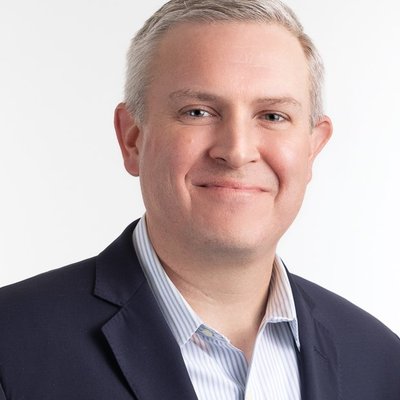In this Q&A series, Tim Morant (TM), Chief Risk Assessment Officer at Munich Re Life US, explores the rapidly changing risk assessment landscape with industry experts.
Mike Happold (MH) oversees all facultative underwriting services offered by Munich Re Life US, including underwriting management of our large-capacity Super Pool program. With his unique perspective and tremendous expertise, Mike is a valuable resource for insight into the future of underwriting.
Can you provide an overview of your career path?
MH: All my friends wanted to be firemen, professional athletes, lawyers, and the like. But not me; from a very young age, I always knew I wanted to be a life underwriter. Wait, what? No, not true!! Like most in the life underwriting profession, I fell into the career. My first primary job out of college was with a large suburban savings and loan institution in Chicago. I was a licensed Area Investment Representative in their broker/dealer area, selling all types of registered securities and fixed and variable annuities. After five-plus years in sales, getting married, and starting a family, I was in search of a more stable work schedule and a predictable paycheck.
I had friends who were involved in commercial underwriting. They convinced me it was the perfect fit – rather than assessing and delivering financial solutions based on the objectives and risk tolerance of an individual, insurance underwriting was delivering these same objectives and solutions by assessing risk and managing it at the organizational level. I interviewed with a few insurance companies and ultimately selected a position on the life underwriting side versus the commercial underwriting side. My friends were right. Indeed, it was a perfect fit! I spent just over five years on the direct carrier side, then switched to the reinsurance side, where I have been ever since.
Can you think of a time or opportunity that had a major impact on the trajectory of your career?
MH: Six months after accepting an underwriting position on the reinsurance side, my unit was put up for sale. The uncertainty of who would acquire us and whether we would be retained created an opportunity when the Underwriting Director left the firm. Despite having limited management experience and being new to reinsurance, I was asked to manage the underwriting department through the rest of the acquisition process. In the end, the acquiring company (Munich Re) retained the entire life reinsurance unit and all underwriting employees in the existing location. I was offered a role to continue managing the office, and I have now been with Munich Re for over 25 rewarding and fulfilling years. Being in the right place at the right time played a role, but the opportunity had a major impact on my career.
What key market underwriting trends excite you about where things might be headed?
MH: We are in the early beginnings of the greatest wealth transfer in history. By most estimates, over $84 trillion is expected to pass from the aging baby boomer population over the next 20 years.1 This creates a tremendous opportunity in our industry for advisors, carriers, and reinsurers to promote our products and services to help manage, preserve, and grow that wealth for existing and future generations. Also, I’m very excited about the use of technology and the rise of new underwriting data and tools to improve the customer experience, make it easier for insureds to acquire our products, and help close the enormous protection gap that exists in the US population.
What can we do as an industry to react to or stay ahead of these trends?
MH: Listen to consumers and understand what they desire and need. Then, develop products that are simple to understand, flexible, and fill those needs. The exciting opportunities around combination products are a good example of preserving and managing wealth while also serving the additional needs of the aging insured population.
What are some of the major challenges you see that the industry is facing or will face in the near term?
MH: From a pure risk selection perspective, an underwriter today has access to so much more data, as well as different types of data, to analyze. Being able to efficiently review only the salient information necessary to make an assessment becomes very challenging, both in maintaining service level standards and assuring the underwriter has the critical thinking skills needed to interpret, understand, and analyze these new evidence types. This underwriting challenge is magnified by the large expected resource gap that exists in an industry with an aging underwriting population that has not been replenished by new recruitment and/or in-house training programs over the years. Also, given the rapid change that our industry has experienced recently, regulatory scrutiny at both the federal and state levels has become more of a concern. It’s very important for our industry to be transparent with how we are using all new tools and data sets to manage our risks. This is done by continuing to keep legislators well informed and educated on the new tools, how they are developed, and why they are used in our risk selection process.
We are in the early beginnings of the greatest wealth transfer in history. This creates a tremendous opportunity in our industry for advisors, carriers, and reinsurers to promote our products and services to help manage, preserve, and grow that wealth for existing and future generations.
Mike Happold
Munich Re Life US
Are there any blind spots that worry you in underwriting today or in the life insurance market in general?
MH: Our product offering is unlike any other financial product. We provide financial security to families and businesses in their most difficult and stressful times. Because the cost of our products is relatively inexpensive compared to the benefits, and because of its unilateral contract design, fraud is ever present. So the blind spot that concerns me most, especially with the increase in large exposures, is the potential to be selected against. This is nothing new, but the potential of receiving asymmetrical information is much greater now. Some areas that could potentially create blind spots and fraud opportunities include the removal of medicals and lab testing, an increase in non-disclosure involved in direct-to-consumer purchasing opportunities, and the ability to access and use an insured’s data.
If so, what can we do to fix those blind spots?
MH: We need to continue developing and improving tools and models that assist in identifying potential misrepresentation, ensure contract wording is concise and specific enough to provide the necessary protection, and constantly monitor our experience to identify any potential gaps early, so adjustments can be made quickly.
What does it mean to you to “get the basics right,” and why would that be important in underwriting and risk assessment?
MH: Fundamentally, life insurance is a product used to alleviate the financial stress resulting from the loss of life, be it for personal or business reasons. Getting the basics right to me starts with an underwriter making sure the product need is developed properly, a financial interest exists between the inured, owner and beneficiaries, the death benefit is commensurate with the insured’s financial profile and financially justified, and the mortality risk profile is adequately assessed and priced to the appropriate rate class. Ensuring that these basic underwriting principles are followed provides the foundation for our industry to deliver on the promise to be there for our clients in their most trying times.
In the next article in this series, I will discuss digital transformation in underwriting with Adnan Haque, Head of alitheia, Munich Re’s rapid risk assessment and decisioning platform


/Mike_Happold.jpg/_jcr_content/renditions/original./Mike_Happold.jpg)
